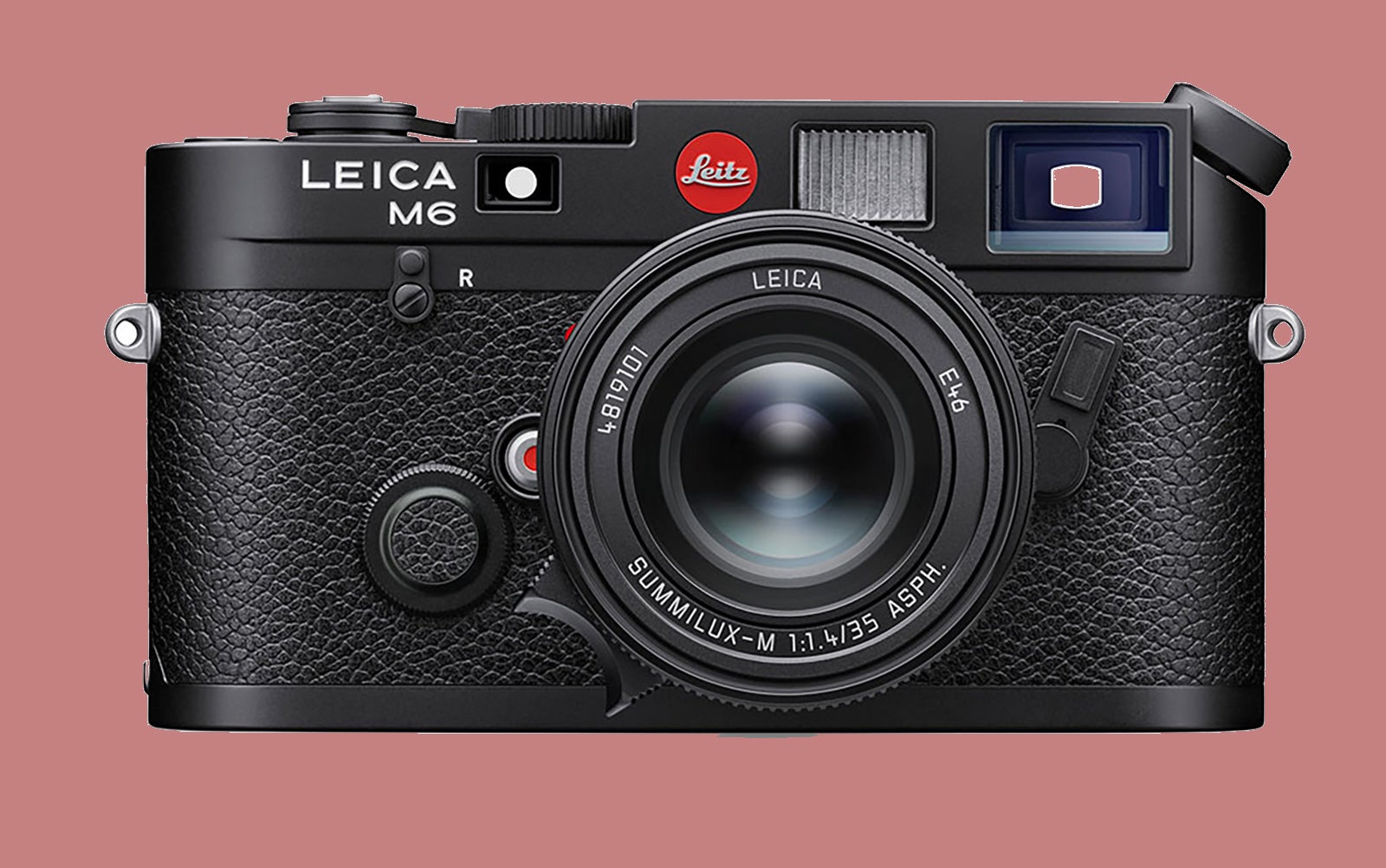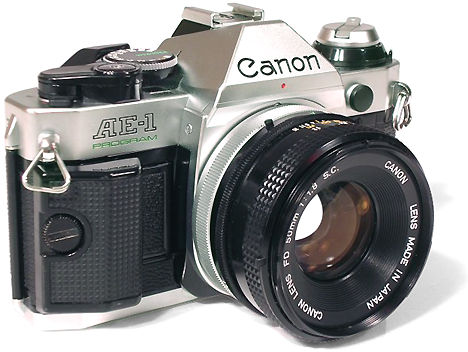Types of Film Cameras
There are so many different types of film cameras, but for the purpose of this Article, I will break them down into 6 categories
Compacts
These are the easiest entry into film photography. They are very simple to use, can fit in a pocket and because they are mostly automatic, you can get excellent results with very little experience. They also take standard 35mm film.
If you want to replace disposable cameras this is the one for you!
Pros:
- They are lightweight and small compared to other cameras meaning they can fit right in your pocket.
- Super simple to load film into.
- Great to carry around at all times.
- Most have a built in flash meaning you can always take photos even on dark evenings, indoors and nights out.
Cons
- The majority of point and shoot cameras are fully automatic meaning you lack the manual controls to get that picture exactly how you want it.
- Most cameras are exclusively autofocus and not manual focus meaning it's hard to take close up photographs.
- Point and shoot cameras that don’t have a built-in flash won’t be very good at night or indoors with low lighting.
- It isn't the ideal camera to learn photography skills, but if you only want to take photos with friends or on a trip, its perfect.
SLR's
These cameras are without a doubt one of the most popular types of cameras among photographers, both amateurs and professionals. SLR cameras have two main characteristics: they have a mirror inside that reflects the light as it passes through the lens and the lenses are interchangeable.
Pros
- Most SLRs are usually completely manual (except for the most modern models) so they are ideal for practising basic concepts to expose our photographs.
- They can be very budget friendly, with some decent cameras available for less than €100.
- There is a wide variety of SLR camera models available at a good price and in good condition. Many will also come with semi-automatic exposure to help guide.
- Thanks to the SLR cameras system, you can compose your photographs without having to worry about the parallax error (a displacement in the apparent position of an object viewed along two different lines of sight).
Cons
- The shutter sound is much louder and they are bulkier compared to rangefinder or compact cameras.
- Many of the older ones do not have autofocus.
Rangefinders

Unlike an SLR camera, a rangefinder combines an optical viewfinder with a rangefinder independent of the lens, allowing focus on the subject by superimposing two images. This means there is no mirror within the camera, making the camera smaller and lighter
When we look through the viewfinder of these cameras, we can identify 3 elements: a completely sharp scene, a small rectangle in the centre of the image where we will see a portion of the same scene (this is the one that will help us focus our photograph by matching the two images) and some framing lines that remind us which part will be the one recorded in the photo. This may sound complex, but it is very easy in practice!
Pros
- They are much more compact and lighter than SLR cameras.
- They have a much more precise focus.
- As they don’t have a reflex mirror, they are much quieter and more convenient when photographing at slow speeds since the risk of getting your shot blurred by camera shake is significantly low.
- They are suitable for long exposures since they offer a constant vision of the image.
Cons
- With these cameras you can’t preview the depth of field.
- They don't usually have very fast shutter speeds so working with open apertures on a sunny day can be a bit difficult.
- They can only focus on one point in the centre of the image, so you will need to first focus and then compose.
- Focusing in low light conditions can be a bit tricky.
Instant

Instant cameras are one of the most interesting forms of film photography. They produce an image instantly, meaning you don't need to send your film off to get developed. There are two companies who make film for these cameras, Fujifilm and Polaroid.
PROS
- You get an image in a photographic paper developed in just a few minutes without having to use additional chemicals.
- They are extremely easy to use.
- You can get a decent instant camera for a very reasonable price.
- The photographs you get have a very characteristic retro look.
CONS
- Instant film cartridges are not cheap at all and contain very few photographic sheets (10/8 sheets).
- Often the only way to check if a traditional (Polaroid) instant camera works or not is by loading a pack of film, since the battery is in them. If the camera doesn't work, you may have lost the film.
Medium Format
 Medium Format cameras take either 120 or 220 film. They are much larger than your standard 35mm camera due to the larger shutter needed to expose the medium format film. There are many variations of medium format camera formats. These include 6x4.5, 6x6, 6x7 and 6x9.
Medium Format cameras take either 120 or 220 film. They are much larger than your standard 35mm camera due to the larger shutter needed to expose the medium format film. There are many variations of medium format camera formats. These include 6x4.5, 6x6, 6x7 and 6x9.
Pros
- Image quality: The larger film size of medium format cameras allows for greater detail, sharpness, and colour accuracy compared to smaller format cameras. This is particularly noticeable when printing large format images or when making high-resolution scans for digital use.
- Depth of field: Medium format cameras typically have larger lenses than 35mm cameras, allowing for shallower depth of field and smoother bokeh, which can be desirable for portrait, fashion, and product photography.
- Control: Medium format cameras often have more manual controls and less automation, allowing for greater creative control over the final image. This can be useful for photographers who prefer to shoot in manual mode and adjust their exposure settings to achieve a specific look.
Cons
- Cost: Medium format cameras, lenses, and film are typically more expensive than their smaller format counterparts, making it a less accessible option for hobbyists or those on a tight budget.
- Size and weight: Medium format cameras are typically larger and heavier than 35mm cameras, making them less portable and more cumbersome to carry around for extended periods of time.
- Complexity: Medium format cameras often have more manual controls and settings, which can be overwhelming for beginners or those accustomed to more automated digital cameras.
Large format
 Large format is the final step up in terms of size. Large format cameras normally take 4x5inch or 8x10inch size negatives but there is no limit on how large they can be.
Large format is the final step up in terms of size. Large format cameras normally take 4x5inch or 8x10inch size negatives but there is no limit on how large they can be.
Pros
- High resolution: Large format film cameras use film that is much larger than medium format or 35mm cameras, which allows for very high resolution and sharpness.
- Control: Large format cameras offer a high degree of control over depth of field, perspective, and image distortion, allowing for more creative control over the final image.
- Longevity: Large format cameras are built to last and can often be used for decades with proper care and maintenance.
Cons
- Cost: Large format cameras, lenses, and film are typically more expensive than those of smaller formats, making it a less accessible option for many photographers.
- Size and weight: Large format cameras are typically large and heavy, making them less portable and more cumbersome to use than smaller cameras.
- Complexity: Large format cameras require a high degree of technical skill to use effectively, with many manual controls and settings that can be overwhelming for beginners.
- Slow workflow: Large format cameras require a slow, deliberate workflow that can be time-consuming and may not be suitable for certain types of photography.


